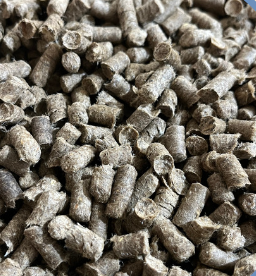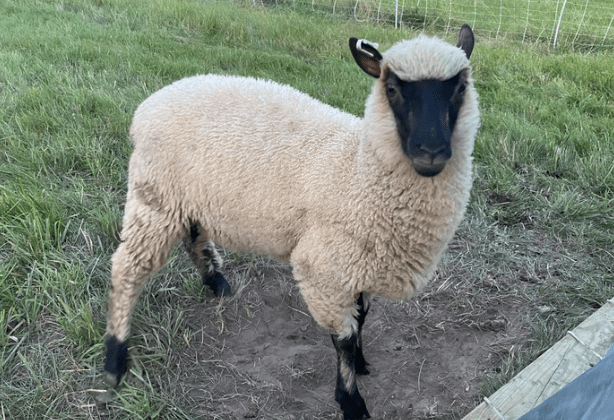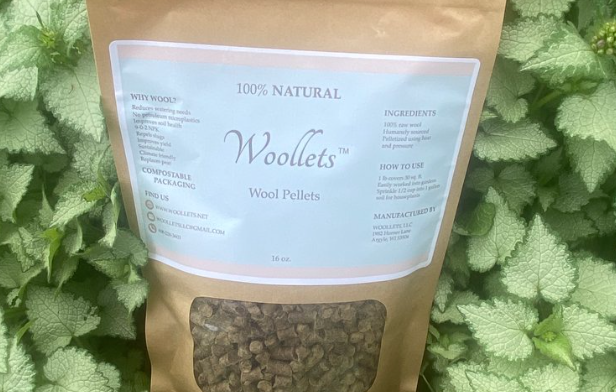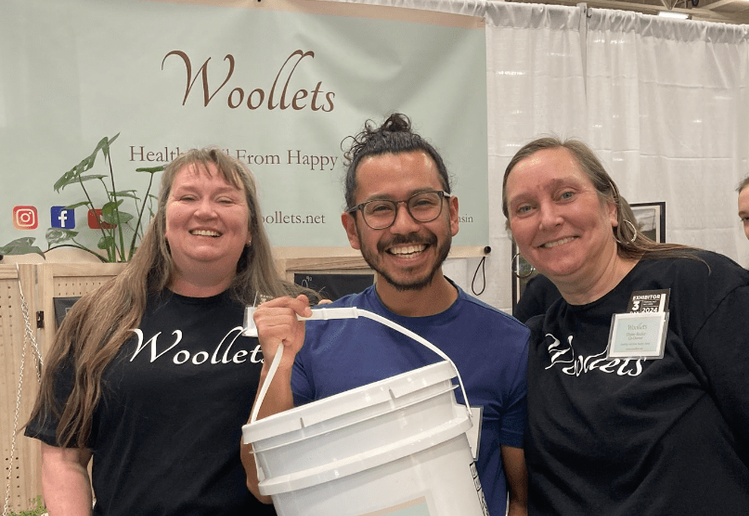Many experienced gardeners rely on peat moss as a reliable way to give their plants the moisture they need to grow and thrive.
But the use of peat moss is controversial since the harvesting of peat moss — a non-renewable resource — results in the release of carbon dioxide, one of the largest contributors to climate change.
Gardeners looking for a sustainable and environmentally responsible alternative to peat moss may be surprised to discover that what they’re looking for is wool. Well, Woollets wool pellets, to be precise.
News with a little more humanity
WPR’s “Wisconsin Today” newsletter keeps you connected to the state you love without feeling overwhelmed. No paywall. No agenda. No corporate filter.
What is a Woollet?
Woollets are a soil-enhancing product inspired by the first wool pellet mills developed in Germany. The team behind Woollets are two Wisconsin women, Karen Mayhew, a self-described “fiber artist, shepherd and fourth-generation farmer,” and Elaine Becker, an educator and prairie enthusiast with a degree in environmental science.
Mayhew and Becker recently joined WPR’s “The Larry Meiller Show” to discuss Woollets and why they hope it becomes a go-to product for everyone from amateur gardeners to generational farmers.
“I’d been looking at what’d eventually become Woollets as an opportunity for the past couple of years — ever since I heard about the first wool pellet mill that was developed in Germany about 10 years ago,” Mayhew said. “When I was ready to take the next step, I told Elaine about it.”
“When Karen first told me about her idea,” added Becker, “I quickly realized how beneficial this could be for the entire planet as an alternative to peat use.”

Why are Woollets more environmentally responsible?
Asked about the dangers of using peat moss, Becker said it “is the most efficient carbon sink we have on the Earth. It covers about 3 percent of the Earth but it can store 33 percent of the carbon that we create.”
“But it’s unsustainable because it takes thousands of years to develop and it can be destroyed in a fraction of that amount of time,” she continued. “So people need to find alternatives to using peat and wool could be the answer.”

Becker explained how the pellets are made: “We start with raw wool straight off the sheep. We shred it in our wool crusher, then the wool is put into our pellet mill. The pellets are then heated up to 180 degrees, a process that kills off any weed seeds. Then, the lanolin that is in the raw wool melts in that heat and binds the pellets together. When they cool and harden — in a shape that resembles rabbit food pellets — they are ready for use.”
The movement of using wool in gardening is picking up steam. Becker cited studies done by both the University of Vermont and Ohio State University that found when compared to typical fertilizers, wool could give increased yields and potentially half the amount of time it takes vegetables to go from seed to market.
“In the Ohio study,” added Becker, “greenhouses could bring organic tomatoes from seed to market in about 76 days. But with wool pellets, tomatoes could be market ready in as little as 38 days.”
Mayhew credited “the nitrogen punch” for the effectiveness of wool in gardening.
“Wool consists of about nine to 14 percent nitrogen,” Mayhew said. “That is three times the amount in chicken manure. But because there is no urea in the wool, you’re not getting any kind of fertilizer burn. So it’s a big pop.”

Becker also added that in comparison to some commercial fertilizers, wool breaks down over time, releasing nutrients she said won’t burn your plants or roots while simultaneously aerating the soil.
In addition, Mayhew pointed out that wool is both hygroscopic (water absorbing) as well as hydrophobic (water repelling), which means it can help plants better handle fluctuations in weather brought about by climate change. Becker said gardeners using wool should be able to water roughly 25 percent less.
Mayhew and Becker’s Woollets have been approved for organic farms and growers by the Midwest Organic Services Association.
Becker and Mayhew estimate that users need 1 pound of Woollets to cover 30 square feet, or a half a cup of pellets to a gallon of soil. Becker cautioned “less is more” and said more pellets can always be added later.
In response to concerns about long-term effects on soil treated with wool pellets, Becker said wool helps to strengthen the soil as the soil is fed by the nutrients and the aeration properties of the wool. She advised that many chemicals used in gardening and farming feed plants rather than the soil itself and that soil needs a natural substance — like the wool found in Woollets — to thrive.


